The epic battle that saved Kyiv from Russian occupationWe spent months painstakingly piecing together eyewitness accounts of the most important battle of the war so far: This is the Battle of Antonov Airfield.Editor’s note: Ahead of the two-year anniversary of the full-scale invasion, we are taking the step of making this issue full available to the public. If you’re new here, please sign up for free! “Where’s my artillery?” demanded the voice on the phone. It was Valerii Zaluzhnyi, the commander-in-chief of the Ukrainian armed forces. Russian paratroopers had landed on Antonov Airfield, 20 miles northwest of central Kyiv, despite courageous efforts by Ukrainian special operators and the Fourth Brigade of the National Guard to defend the grounds. By 3 p.m. on February 24th, 2022, the first day of the full-scale invasion, Ukrainian forces had been forced to pull back to the perimeter of the strategic site. This single moment was the point of maximum danger and vulnerability for the survival of the modern Ukrainian state. Having taken the airfield in an air assault, the Russians now had the opportunity to land massive cargo planes filled with armored vehicles and thousands of troops, right in the suburbs of Kyiv. With that ability, the city could fall within hours, and with it, the democratically-elected government. It fell to Col. Oleksandr Vdovichenko, the commander of Ukraine’s 72nd Brigade, to make sure that the Russians couldn’t hold the airfield. But Vdovichenko didn’t have much to work with. He told Zaluzhny that a mere four pieces of 2S3 artillery, Soviet-era guns firing 152.4mm rounds, were en route to firing positions near the airfield. Everything else was still being unloaded from train carriages in Kyiv. Zaluzhny ordered that they open fire on the runway as soon as they could – they needed to disable it immediately. The colonel had no time to think about it then, but he was fighting in the most important battle of the war. If Putin was able to take the airfield intact, the Russian military would be able to bypass a long trek over land, and bring soldiers right in to take the capital. “The Battle for Kyiv could have ended with a Russian victory had they taken the airfield," said Nick Reynolds, a research fellow at the British think tank RUSI. "Russian offensive operations would have been much easier." Approaching one of the main hangars at Antonov Airfield. During the disorganized, frenzied battle that followed, Ukrainian resistance – and luck – turned the tide of the entire war. This epic stand by the people who fought at Antonov Airfield pierced the idea of Russian military superiority, and of a quick military victory. Shocked as they were about the full-scale invasion, Ukrainian morale skyrocketed with this tale of resistance. The story of this epic, 36-hour battle is also the story of how Ukrainians prevented Kyiv from falling into Russian hands. It’s why we are talking about fighting in the east of Ukraine now rather than fighting in the west. And it’s arguably why Volodmyr Zelenskyy is still alive. We’re trying to hit financial sustainability as we approach the two year mark of the invasion. Fight so-called ‘Ukraine fatigue’ by sponsoring our work to keep the spotlight on this awful war. Upgrade to a paid membership today! Hundreds of Russia’s elite troops storm the airfieldIn the first hours of his invasion, Vladimir Putin ordered his most elite troops to get behind enemy lines, to an airfield right outside Kyiv that was normally used for cargo and flight testing. Dozens of helicopters ferried hundreds of Russian airborne soldiers to within striking distance of the capital city’s central district. The Russians had already successfully hit two air defense sites that were responsible for protecting the skies north of Kyiv, allowing a helicopter air assault from the direction of Belarus. It was about 11 a.m. when the sound of helicopter rotors began filling the air near Antonov airfield. Still in a state of confusion or denial, both civilians and soldiers near the airfield thought it must be some sort of training exercise.
Russian Ka-52 helicopters patrolled the airspace around the airfield, shooting at everything that moved. Nicknamed ‘The Alligator,’ for their battlefield capabilities, these attack helicopters made large, looping circles above the airfield as they fired and prepared for additional attack runs. One of them hit a fuel tank, setting up dark smoke that could be seen from miles away. Russian helicopters were firing everywhere, shooting unguided rockets at the airfield, office buildings, buses, and a hangar. There was no discernible strategy or effort to avoid hitting civilian targets. The Russian airborne troops, numbering in the hundreds, landed in several groups: two assaulted from the west side of the airfield, while one came from the east. Soldiers and civilians in the area say that about three dozen helicopters were involved in the initial rush to secure the airfield. The images from that day are surreal and cinematic: helicopters bursting across the sky with urban backdrops. Ukrainians filmed from their windows as ferried soldiers whizzed by, headed to Antonov Airfield. It was like a scene out of Black Hawk Down: soldiers moving effortlessly in unison as they assaulted an airfield operations building, a thick plume of black smoke billowing in the distance, and attack helicopters racing overhead releasing a burst of flares. Russian troops dashed off helicopters, moving quickly to take control of the control tower and the adjacent airfield administration building. 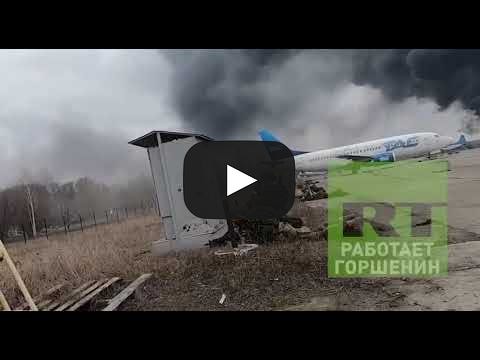 "Contact left!" shouted one soldier as Ukrainian forces began firing at them. "Let's go!” shouted another, as they rushed forward. In the chaos, a Russian is shown yelling through a bullhorn: "Soldiers of Ukrainian army: Put down your weapons and give up!" Spoiler alert: they didn’t. Only about 200 Ukrainian soldiers had been left to guard the airfield, many of them conscripts who were barred by law from taking part in combat. They were supply officers, press officers, financial officers, and military firefighters assigned to the brigade's headquarters. Most had no experience in battle: a local commander estimated that less than twenty men had seen combat prior to the morning of the invasion. The Ukrainian soldiers were also lightly armed: they had an ancient, Cold War era anti-aircraft autocannon known as the ZU-23-2, but very little ammunition for it; They had some rocket propelled grenades, but again, only a handful of rounds. For the most part, they used small arms against the incoming helicopters – a terribly unfair fight. Lt. Andrii Kulish, a rare combat-hardened soldier who had already spent years fighting Russian troops in eastern Ukraine, was among those troops who tried to delay the Russian advance. “I cannot say that the guys were panicking,” he recalled. “It’s hard to say why. Maybe they didn’t know what to expect.” After all, there were plenty of reasons to panic. Kulish had just four magazines for his rifle – a mere 120 rounds. But one thing that the Ukrainian defenders did have was a Soviet-made Igla, a surface to air missile launcher. A National Guard soldier, specializing in anti-air operations, managed to hit a Ka-52, sending it to the earth and boosting the morale of the Ukrainian defenders. It was among the few bright points of that morning. Hours of fighting commenced, with rounds upon rounds of incoming Russian automatic cannon and rocket fire. Kulish began firing at the low-flying helicopters from his first floor office, taking cover as they approached, and then popping out to take shots after they passed by. Other Ukrainian defenders took cover between cars, ultimately managing to damage the heavily armored helicopters with just their rifles. The lead attack helicopter on the scene that morning was immediately shot down, said Russian pilot Ivan Boldyrev, in an interview with Telekanal Zvezda, a Russian network owned by the Ministry of Defense. “They shot from all sides,” he said. Incoming fire damaged his main gearbox and left engine, forcing him to retreat. Running out of ammunition and about to be overrun, the Ukrainian National Guard forces made the decision to withdraw in the early afternoon, getting into a shootout with Russian forces as they did. Miraculously, none of these Ukrainian soldiers were killed in combat. The Russian troops were, however, able to capture a number of soldiers who were guarding a radar station as prisoners, as well as Ukrainian border officials that worked at the airfield. The Russians had been confused when the Ukrainians fought so fiercely. “Our guys were interrogated by Russians and they asked our guys, ‘Why did you shoot back?’ explained Kulish. “So apparently they were so brainwashed that they just thought that there would be absolutely no resistance from us.” The border officials and prisoners of war were forced by the Russian troops to collect bodies that day. They said that the number of Russian dead totaled 80 soldiers. Ultimately, video released at the time shows Russian soldiers unfurling two Russian flags on the roof of a building at Antonov Airfield by mid-afternoon on the 24th. It was around that time that Zaluzhny made his call to Col. Vdovichenko. They needed to turn the tide, and quickly. Ukrainians taken off guard, despite warnings from the WestHow did it even get to this point? Most Ukrainians to this day will recall how impossible the prospect of a full-scale invasion felt before it happened. A common line of thinking was that the Russians were merely pretending to invade, in order to create uncertainty among the international business community and cause trouble for the Ukrainian economy. This naïveté extended to the Ukrainian government. President Volodymyr Zelenskyy was downplaying the threat of an invasion until almost the very end – he later said it was because he was also concerned about the economy. Zelenskyy was hardly alone in his assessment: European officials told Ukraine they didn’t see it as likely, and in particular it took the Germans so off guard that the chief of its foreign intelligence service was in Ukraine when the invasion happened, and had to be evacuated by special forces. Even among those who thought that a full-scale invasion was likely, there were doubts that it would target Kyiv. But the Ukrainians can’t say they weren’t warned: CIA Director William Burns visited Kyiv less than two months before the invasion, specifically warning that the Russians would try to seize Antonov Airfield, in order to create an air bridge into the Kyiv region, swiftly overthrow the government, and capture the capital. This information was not appropriately acted on. Kulish is part of the 4th Brigade of the Ukrainian National Guard, which has a base located adjacent to Antonov Airfield. When explosions began on the day of the invasion, virtually none of the brigade was present at their base. 90 percent of the unit had been deployed to the east: infantry battalions, tanks, artillery, anti-aircraft defenses – several thousand troops were sent away from the critical airfield, ignoring American warnings that it would be the site of a Russian attack. “Some part of your nature, until the very end, tries to resist it and does not believe that [the Russians] will actually do this,” Vdovichenko explained, citing wishful thinking. Walking around the ruins of a building at Antonov Airfield. Antonov, the Ukrainian aircraft company that owned the airfield, also acted as if it did not take the threat of invasion seriously. The Ukrainian intelligence agency, the SBU, said that a subsequent investigation revealed that company officials prohibited the Ukrainian military from building defensive fortifications at the airport before the invasion. “We were discussing employee procedures in case there were missile attacks, but the physical capture of the airfield – we were not ready for that,” an Antonov company official said. Russian arrogance meets Ukrainian unpreparednessWhile the Ukrainians were engaged in wishful thinking, Russian planners were plotting. “The Russians sought to conduct an air assault to rapidly seize the airport and secure it,” said George Barros, a Russia and Ukraine analyst at the Institute for the Study of War. “Meanwhile, elements of the Russian Central and Eastern Military Districts would drive south from Belarus to Kyiv’s western outskirts and link up with the Airborne forces in Hostomel, relieving them.” The plan called for 18 enormous Russian strategic cargo planes, IL-76s, to fly to the newly-secured Antonov Airfield with further reinforcements of infantry, armored vehicles, and artillery. There had also been a well-thought out infiltration scheme in which Russia supporters already in Ukraine would help airborne and special operations troops access the capital, less than an hour’s drive away. It had been widely reported that assassins and saboteurs were on the streets of Kyiv in those days, seeking to decapitate the government and kill Zelenskyy. There were traitors among the Ukrainians: an Antonov Airfield employee’s son had connections to Russian intelligence, and reportedly revealed where the airfield’s air defenses were. For this critical and risky mission, the Russian military relied on the VDV – its elite airborne forces. The VDV is considered the most competent, professional and combat-experienced part of the Russian military. The Russian military has a history of airborne assaults, such when they captured Prishtina airport in Kosovo in 1999. In 1968, Soviet troops swiftly captured an airport in Prague, allowing large cargo aircraft to arrive and unload tanks to crush the Prague Spring. In both cases – and unlike at Antonov Airfield – they met little to no resistance. And it appears the Russians were counting on that again. Russian news sources show the VDV soldiers loading up onto trucks at Mozyr airfield in Belarus, presumably to take them to waiting helicopters. As they embraced each other and prepared for combat, they placed duct tape on their arms to identify themselves to fellow Russian soldiers. The Russians thought it would be a cakewalk – that they would be met with locals bearing bread and salt, a traditional Slavic welcoming gesture. So confident were they that on the first morning of the invasion, freshly landed Russian airborne troops were walking casually around the outskirts of Antonov Airfield, 30 km from the heart of Kyiv. This careless approach would have terrible consequences for Putin’s plan. Low on ammunition, a convoy of soldiers from the Georgian Legion – a group of foreign fighters supporting Ukraine – were driving around Antonov Airfield, having spent hours shuttling rifle rounds to and from the battlefield. One Georgian Legion soldier, Mamuka Mamulashvili, watched as Russian troops walked along the perimeter of the airfield. Lacking bullets to fire his weapon, he stepped on the pedal in his black 2000 BMW 5 Series, turning his vehicle towards the Russian soldiers on the road. "It was very chaotic,” he recalled. “So we just pressed the gas and fucked them up." Multiple cars in his convoy would run over the Russian troops. The Russian soldiers – he said he didn’t count how many – were uninterested in his civilian car up until the moment he ran them over. The bloody story exemplified everything about the haphazard battle, in which Russian arrogance met Ukrainian unpreparedness. Russian troops also fired indiscriminately, without clear objectives. Around noon, fighting on the airfield set three aircraft on fire. They had been fully fueled and prepared for takeoff at short notice. Civilian emergency workers rushed over to put out the fire, an airfield official said, and were killed. They were among the first alleged war crimes of the full-scale Russian invasion (there are now more than 125,000). Three bodies were later recovered, but the body of the man who led the emergency services brigade still hasn’t been found. The result of the Battle of Antonov Airfield was, in at least some small part, due to luck and timing. By 3 pm on February 24th, Russian troops had hoisted their flags over the airfield. Colonel Vdovichenko was determined to deny them a stronghold. His brigade was only at about 50 percent of its capacity, but had been battle-hardened in the years before the full-scale invasion. As soon as his artillery rolled into place near Antonov Airfield, he ordered them to open fire. A local commander pushed back: “aren’t our people there?” came the response. Even then, there was a sense of bewilderment that the Russians could be in their backyard. After double-checking that Russians had taken the airfield, artillery fire began around 5 p.m. “It was to show them that we can reach out and hit the airstrip, so [that they would feel] afraid to land on it,” Vdovichenko explained. “They still had the physical opportunity to do so, but they were afraid to do it because we were showing them that we had clear fire control over the airfield.” The colonel ordered bridges pre-rigged with explosives to be destroyed, to halt any Russian advances. As Ukrainian troops fought to retake the airfield, control of the strategic site switched back and forth. "Fuck, at least one more day and it would be easier, you know, and we would be more prepared,” he recalled. “One more day. 24 hours. And we didn't have 24 hours." But ultimately the defenders on the airfield, and Vdovichenko’s four artillery pieces, bought that crucial time for other forces around Kyiv to prepare. The artillery opened fire, he said, “just in time.” Vdovichenko’s artillery were soon joined by two Ukrainian Su-24 bombers which Kulish saw hit the runway. The blasts damaged the surface of the airstrip, destroyed lighting along the runway, and knocked out navigation equipment. From that point on, the airfield was ineffective as a place for the Russian military to land troops and vehicles. Frantic fighting continued for control of the airfield itself, leading to confusion over who controlled the grounds. As night fell, impromptu groups of Ukrainian volunteers, some armed only with rifles and many without body armor, ambushed and were ambushed by Russian troops around the perimeter of the airfield. The Ukrainian government was handing out rifles to whoever would take them at this point, and one senior Ukrainian officer said that in the initial days, “there were random civilians firing at Russians.” “I have goosebumps [recalling this] because for me the most important thing wasn't even the technical aspects of a single battle… It was just this spirit that everyone was together… everyone wants to fuck [the Russians] up at that moment,” Vdovichenko said. “For the Battle of Kyiv, it was just us. There were no individuals. It was just us. That was the great thing about it.” Ukrainian staff on the airfield had made a critical decision that would buy time: they opted to block the airstrip with large trucks and vehicles, all along the runway, so it would be impossible for anyone – Russian or Ukrainian – to quickly land or take off. The Russian IL-76s cargo planes that were to bring in an additional thousand troops, along with armored vehicles, turned around mid-air and returned to Belarus. It’s not known precisely why – but the blockages on the runway, active combat, artillery fire on the airfield and the failure of Russian troops to secure the airfield likely played a key role. Russian forces ultimately took control of Antonov Airfield, but their tactical victory was also an extremely costly one. The time spent fighting for control of it allowed Ukrainian forces to build up defenses of the city, and for Vdovichenko to bring more armored vehicles and artillery to the fight for the broader Battle for Kyiv. The Battle of Antonov Airfield took around 36 hours, and effectively ended with the Russians taking control of a disabled airfield, rendered useless by Ukrainian attacks. The occupation of the airfield lasted much longer: until early April. During the period, some of Russia’s best troops were worn down by relentless ambushes and attacks. Long columns of Russian vehicles were stuck in traffic jams, stuck in rough terrain and under constant harassment by Ukrainian anti-tank teams. Russian generals quickly learned that they would not be taking Kyiv in 72 hours. It took another month and a half to learn they wouldn’t be taking Kyiv at all. After the Battle of Antonov Airfield, Ukrainian forces retreated south to the other side of the Irpin River to hold the Russians away from the center of the capital. Tatiana Slesareva, a retired math teacher living near the airfield, counted 36 helicopters the morning that the battle kicked off. Troops began patrolling and checking Tatiana’s house twice a day – along with an enormous, ceaseless rumbling, the constant movement of howitzers and artillery and armored vehicles. Tatiana’s husband refused to leave their home, and she refused to leave him – so they stayed through the entire occupation. She spoke often with the young Russian soldiers who walked by her home – they were shocked that the Ukrainians were not prepared to accept their “liberation.” One time, she spoke to a Russian commander, whose troops had just come back from a bruising defeat. “He started to speak to me in this hostile manner. ‘Do you know what happened? I have a friend left behind there, in a tank. His legs were ripped off!’” she recounted. “‘What have we done to you? We came to liberate you!’” Tatiana stood her ground, telling the commander, “Why did you come here? This is our homeland. Obviously we’re going to defend it.” The period left her with terrible mental scars. As we talk about the period of occupation, when she was without electricity, gas, or information from the outside world, she lets out these involuntary grunts and moans. This is more than a year later. One day during the occupation period, she felt that something was off: the dogs weren’t barking, even the chickens in the yard were silent. The normal screech and whine of vehicles and tanks were absent. “We actually were more mostly terrified of calm, peaceful moments,” she said, “always anticipating the worst during silence.” At first, they were too petrified to do anything – but three days passed, and she told her husband that they should walk around to see what they could find out. “I saw eight people walking towards me,” she said. From a distance, she couldn’t tell who they were – Russian or Ukrainian. “And I asked them, ‘are you ours?’” she recalls. “And they responded, ‘we are yours.’ And then I started to cry uncontrollably… it was impossible for me to talk.” They had been liberated. Ukrainian forces rushed to retake Antonov Airfield, abandoned by retreating Russian forces who abandoned the city, concluding the Battle for Kyiv. The Ukrainians had, by sweat and blood, pushed the invading force out. Destroyed vehicles at Antonov Airfield. With a little luck, they prevented Russia from fulfilling their plan of capturing the airfield and immediately using it to bring in thousands of troops, along with tanks, artillery and armored vehicles that would have been put to work in an attempt to capture Kyiv. The fact that it did not happen comes down to three events, none of which were coordinated: First, the Antonov Company put trucks out on the runway, preventing massive Russian cargo planes from landing. Second, the unprepared and understrength Ukrainian defenders of the airfield did just enough to repel the initial waves of the Russian assault, preventing the clearing of the runway. And finally, Ukrainian commanders belatedly recognized how vulnerable the airfield was and ordered its destruction through bombardment, greatly reducing its value to the Russian military. The battle had enormous strategic consequences, among them a message to the Russian military and the world that Ukrainians would resist the Russian military ferociously. The combat at Hostomel Airfield also blunted Russian momentum and the advantage of surprise – ultimately leading to Russians failing to encircle Kyiv, decapitate the government, or control the capital city. It wasn’t neat or pretty, but the disorganized defense of the airfield showed Ukrainian will against extraordinary odds. It exemplified the national spirit in those early days of war. And it’s the reason why Ukrainians still control Kyiv today. Ross Pelekh, Alessandra Hay and Myroslava Tanska-Vikulova contributed to this story.
|
Search thousands of free JavaScript snippets that you can quickly copy and paste into your web pages. Get free JavaScript tutorials, references, code, menus, calendars, popup windows, games, and much more.
The epic battle that saved Kyiv from Russian occupation
Subscribe to:
Post Comments (Atom)
The Weekender: Moon metaphors, procrastinating monks, and a visit to a cheese factory
What we’re reading, watching, and listening to this week ͏ ͏ ͏ ͏ ͏ ͏ ͏ ͏ ͏ ͏ ͏ ͏ ...
-
code.gs // 1. Enter sheet name where data is to be written below var SHEET_NAME = "Sheet1" ; // 2. Run > setup // // 3....
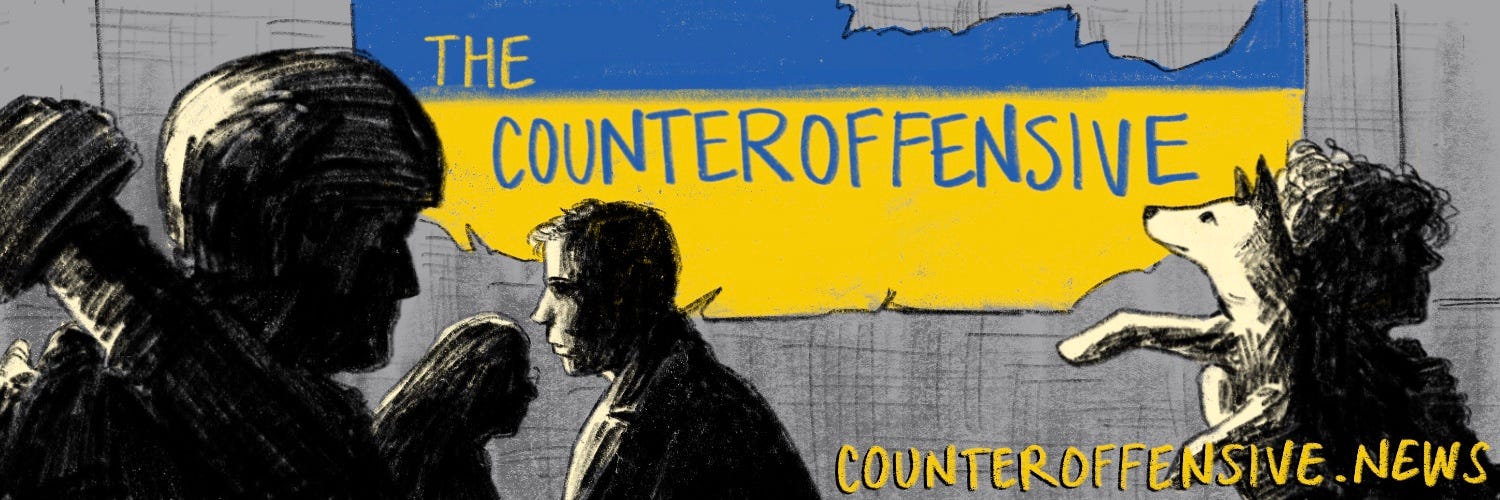
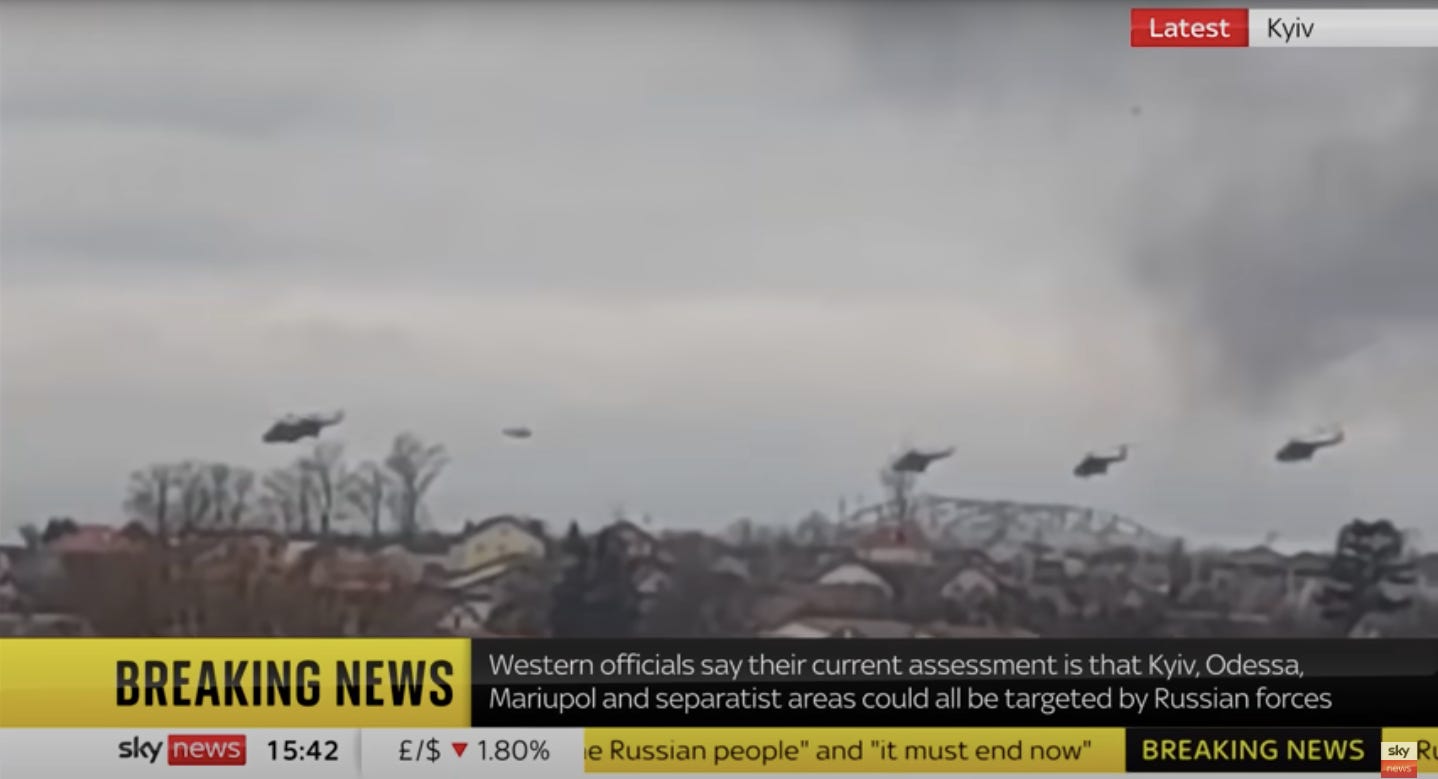
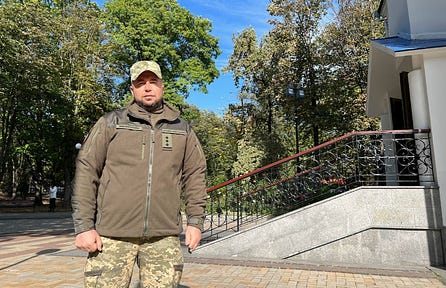
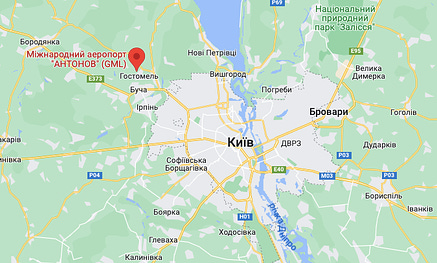
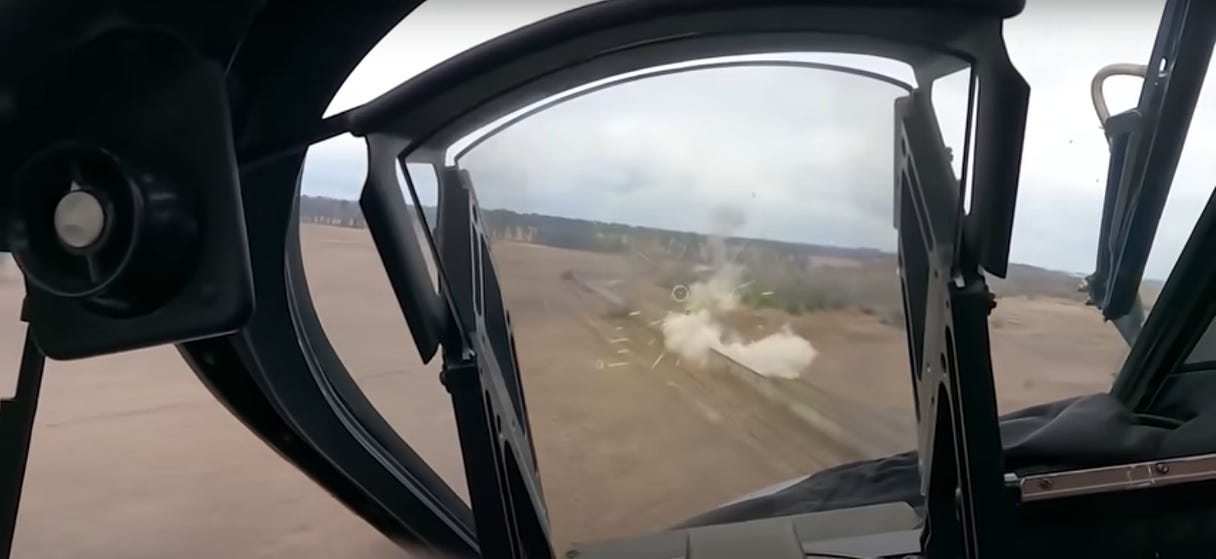
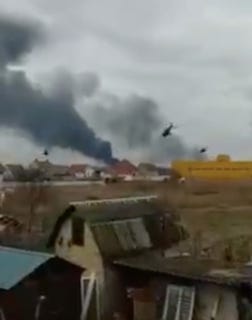
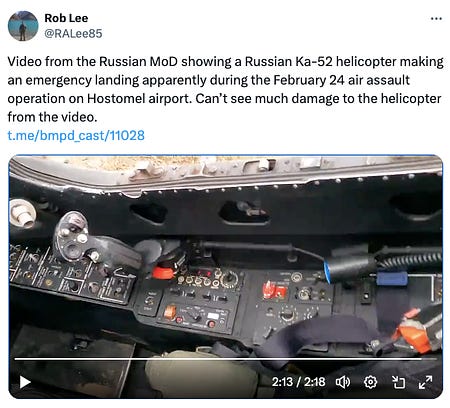
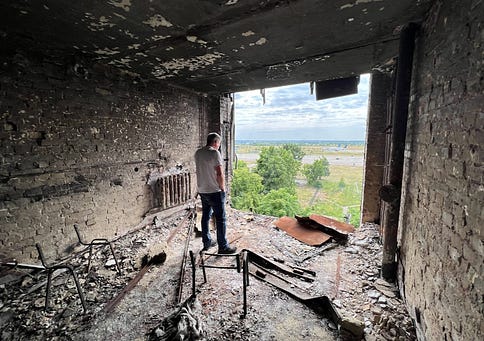
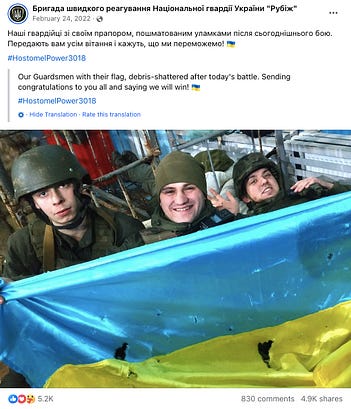
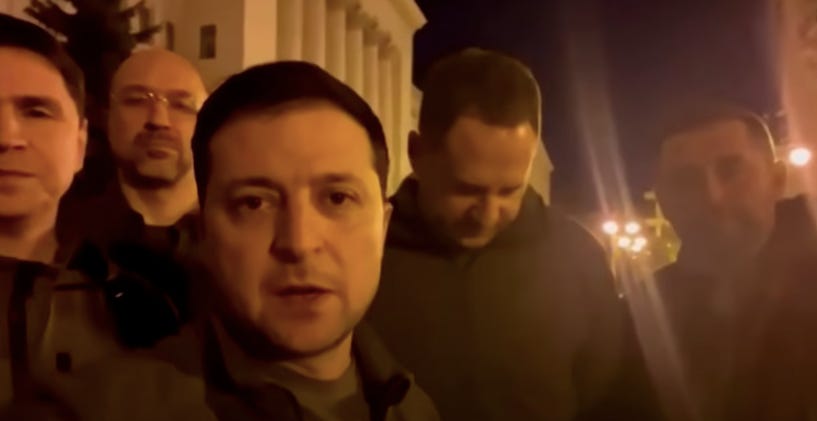
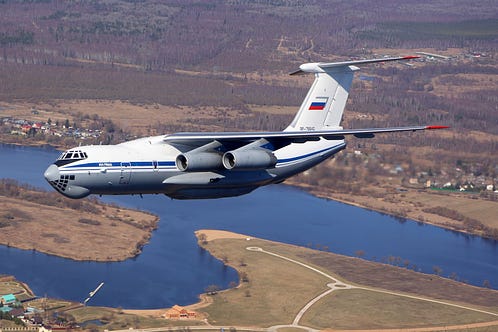
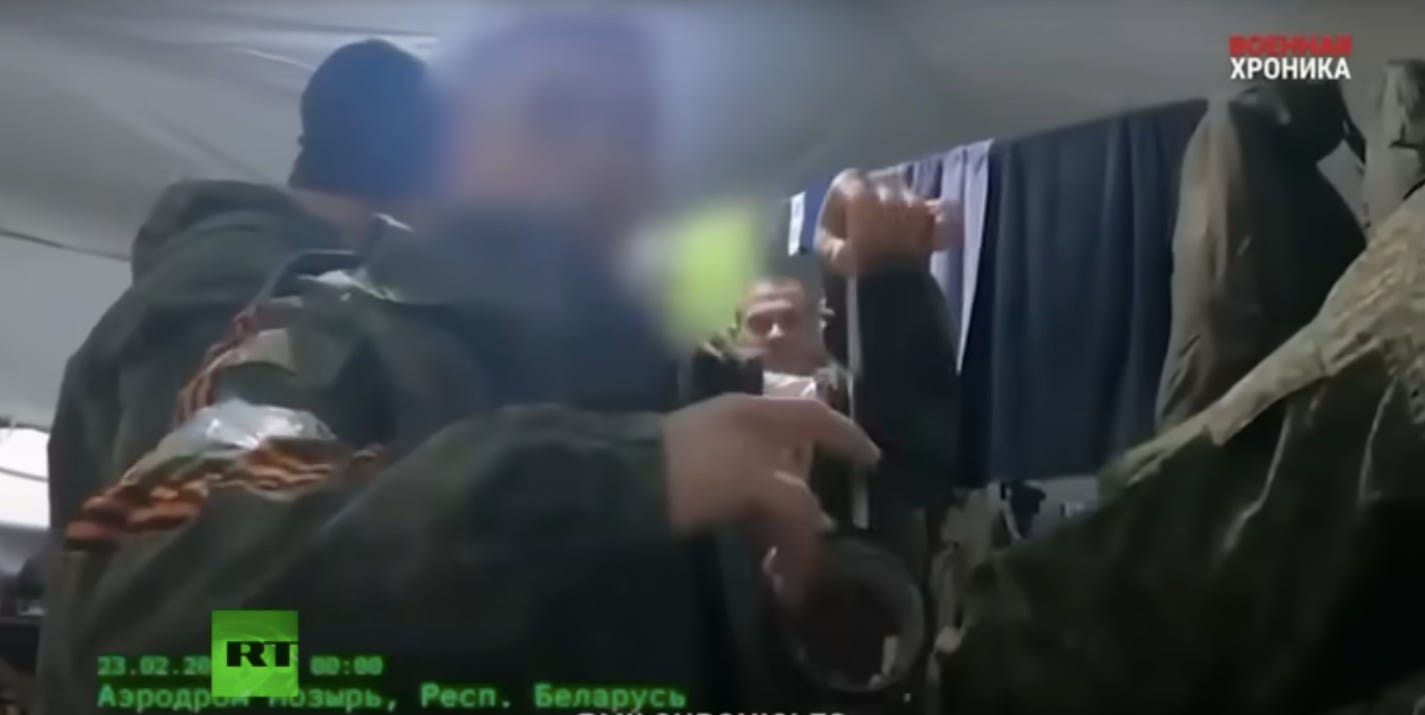
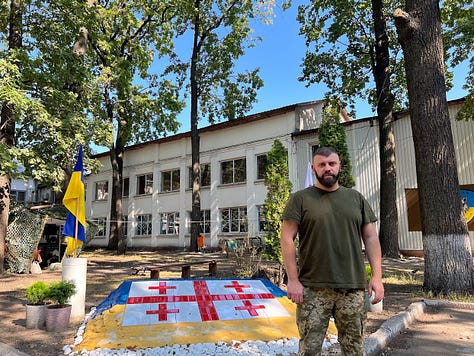
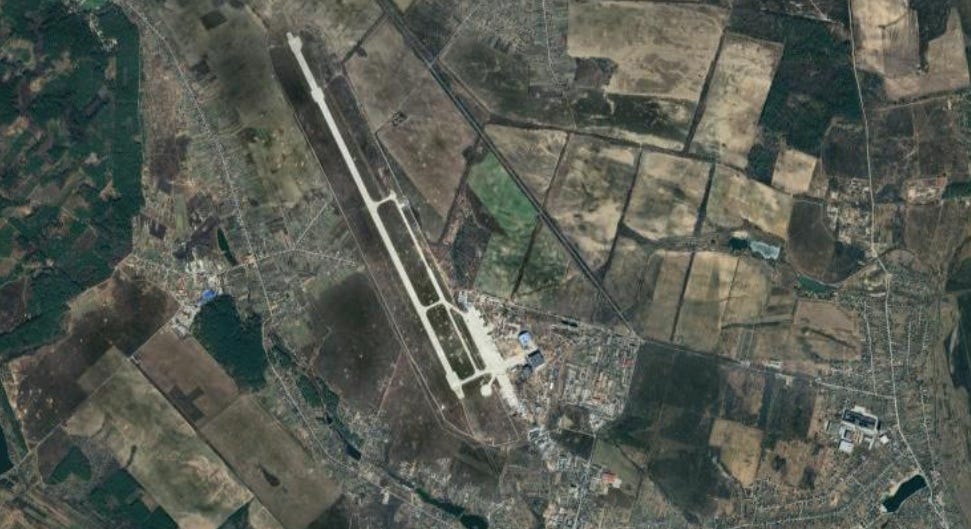
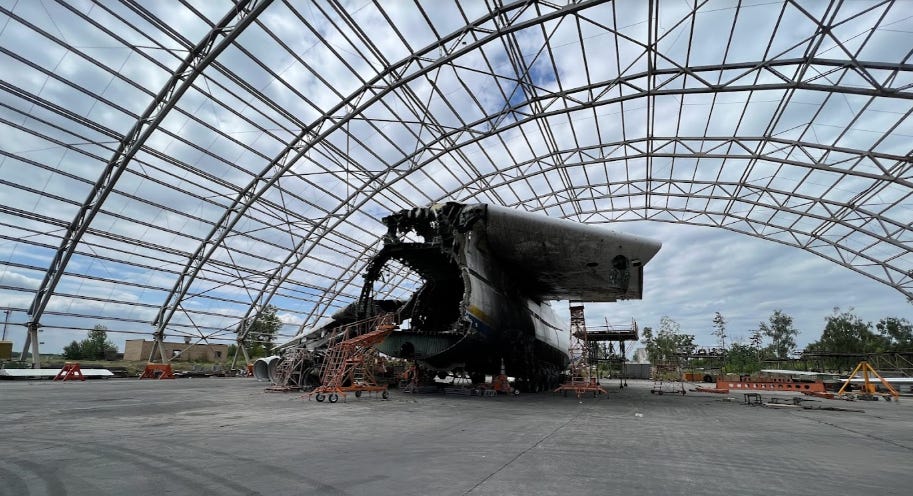
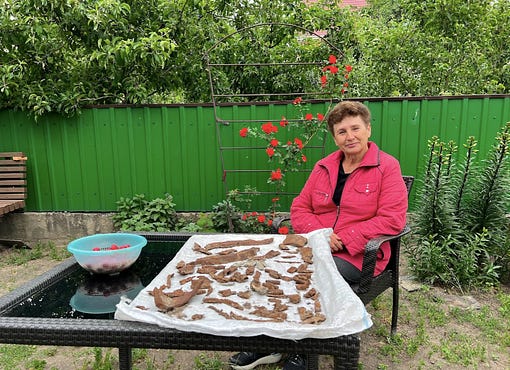

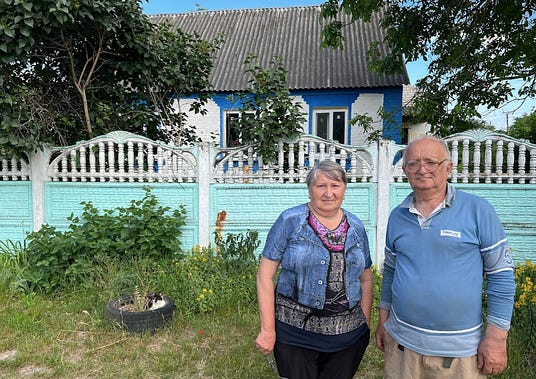
No comments:
Post a Comment